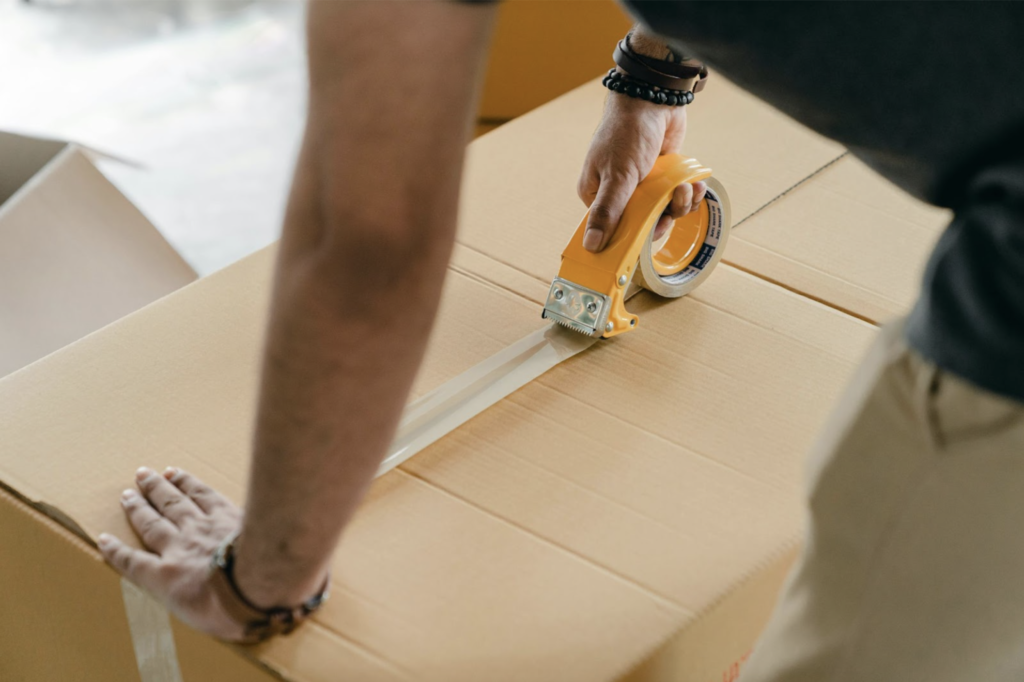Warehouses receive orders on a near-constant basis. Many of these orders include items located in different parts of the facility.
This may sound like a recipe for chaos if you’ve never worked in a warehouse before. Chaos, of course, leads to errors. Surprisingly enough, however, warehouses are run like well-oiled machines. Much of this can be traced back to a process that may sound simple in theory but is much less so in practice: pick-and-pack fulfillment.
Here’s how it works.
From Shelves to a Truck to Your Doorstep
3PL warehouses are responsible for storing their clients’ finished goods or products that have not yet been sold. Each day, warehouse facilities receive shipments of thousands of items from their clients’ suppliers.
As trucks arrive, warehouse employees unload them and place each item in the shipment on its designated shelf. Items remain on shelves until the warehouse receives a customer order and the item is required to fulfill an order. That’s when the pick and pack fulfillment process begins.
Whenever the warehouse receives an order, at least one employee is responsible for fulfilling it. This includes retrieving the item from a shelf, picking it, and then taking it to a station with boxes, tape, and other materials to pack it. Once all items included in an order are packed into a box, an employee can complete the warehouse’s contribution to the fulfillment process by placing the box on an outbound truck.
This, of course, is a high-level overview of the pick and pack fulfillment process. Let’s dive deeper into the considerations for picking and packing to understand better how they support error-free order processing.
The Right Item. Every Time.
In recent years, warehouse automation technology has made the picking process much faster and improved accuracy. However, even the infusion of technology has remained the most significant decision a warehouse operator must make concerning picking: Their method of organizing their employees to ensure they can quickly locate items on shelves.
We’ll start by discussing the range of methods available to operators, how they choose the right one for their clients, and its role in pick and pack fulfillment.
Piece Picking
Warehouse employees pick one item at a time. This method best fits new and small businesses with low daily order volumes.
Batch Picking
Warehouse employees pick multiple orders at once. Unsurprisingly, this method is suited for companies with a higher volume of daily orders.
Zone Picking
Employees are assigned to different zones in a warehouse. When an order is received, the employee picks items included in it from their zone and moves them to the packing area. Zone picking can be a complex process and typically requires a warehouse management system as a part of pick and pack fulfillment to quickly locate items. Once again, it’s the ideal option for companies that experience a high volume of orders every day.
Wave Picking
Wave picking is similar to zone picking in that employees are assigned to a zone and responsible for picking items located within the zone. Unlike zone picking, the employee picks multiple items simultaneously—much like batch picking—instead of single items.
Picking is only one component of pick and pack fulfillment. Poorly designed packing processes can lead to errors and items sustaining damage in transit.
Packing Makes Perfect

While few people have ever had to pick items from a warehouse shelf, most of us have packed items into boxes. Because of that, we’re aware of some of its associated challenges, including finding a box of the right size to minimize the movement of items contained within during the shipping process.
Warehouse employees pack thousands of boxes each day. Efficient pick and pack fulfillment requires a strategic packing process. Here are a few best practices.
Cartonization
Cartonization involves finding the optimal box for an item based on various factors, including the product’s dimensions, weight, and fragility. Cartonization aims to minimize costs related to oversized packaging while avoiding damage typically caused by undersized packaging. Today, many warehouse operators use software to identify the right-size packaging.
Kitting
Kitting entails packaging multiple complementary items together. Examples of kitting include a box of tools used to repair vehicles. Kitting simplifies pick and pack fulfillment by allowing employees to pick all items at once rather than individually. Every kit is also the same size, making it easy to identify the packaging needed for shipping quickly.
Branded Packaging
Many 3PL operators now allow customers to enhance their brand and differentiate themselves from competitors by offering branded packaging services. Clients can choose to have their logos printed on the box or select from various colors. Like kitting, branded packaging also creates standardization since companies can select packaging for specific items.
Putting it All Together: Picking, Packing, and Error-free Order Processing.
When pick and pack fulfillment is performed at a high level, it can benefit both the 3PL warehouse and its clients. This includes:
- Shortening the time from order to delivery: Well-organized warehouses quickly process orders, getting items from the shelves into boxes and onto trucks.
- Decreased Damage: Efficient picking processes reduce the number of incidents in which items are dropped and damaged while still in the warehouse. Effective packing, meanwhile, prevents damage to items in transit by ensuring items are secure.
- Fewer Errors: When employees can read a customer order, know where the items included in the order are located, and have the tools they need to package the items, it leads to less confusion and fewer mistakes.
CONRI Knows Pick and Pack Fulfillment
If your company is searching for a 3PL provider with a longstanding record of error-free order processing, CONRI is here to help. We have over 70 years of experience developing trustworthy and reliable 3PL solutions for customers throughout the northeast and Florida. Get started by submitting a contact form today!

